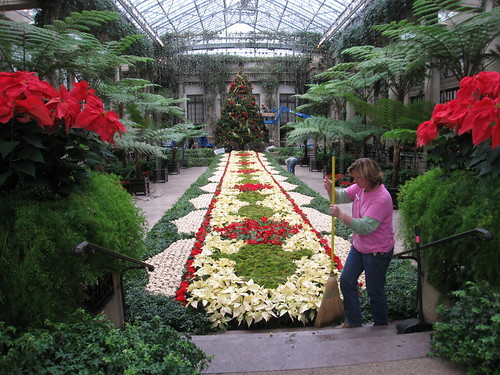 I've visited many wonderful conservatories here in the US and UK, but I never really understood them until I came here. I know that might not make sense so indulge me by trying to put yourself in my steel-toed shoes for a moment: I come from LA. USDA hardiness zone 10, lovely Mediterranean climate with warm, dry summers and cool, dry winters (the 130 year average annual rainfall for LA is 15 inches, in case you were wondering). When I arrived at Longwood for my PG interview a year ago September, I spent many happy hours wandering through the 4-acre conservatory (truth be told, I got lost in it!) but the Palm House didn't do much for me, because most of the plants in it could - and many do - grow quite happily outdoors in So Cal. They were a common sight to me and therefore weren't very interesting. Learning the history of the plants in the collections has completely changed my point of view.
I've visited many wonderful conservatories here in the US and UK, but I never really understood them until I came here. I know that might not make sense so indulge me by trying to put yourself in my steel-toed shoes for a moment: I come from LA. USDA hardiness zone 10, lovely Mediterranean climate with warm, dry summers and cool, dry winters (the 130 year average annual rainfall for LA is 15 inches, in case you were wondering). When I arrived at Longwood for my PG interview a year ago September, I spent many happy hours wandering through the 4-acre conservatory (truth be told, I got lost in it!) but the Palm House didn't do much for me, because most of the plants in it could - and many do - grow quite happily outdoors in So Cal. They were a common sight to me and therefore weren't very interesting. Learning the history of the plants in the collections has completely changed my point of view.To really appreciate the differences in gardening under glass compared to the great outdoors, I think it's important to understand what a conservatory is meant to be. The word 'conservatory' comes from the Italian “conservato” which means 'stored, or preserved' and the Latin "ory" which means "a place". Hence, a place to preserve (my cinematic brain immediately leaped to the scene from the movie National Treasure when Ben and Riley were trying to figure out a way to steal the Declaration of Independence: Ben Gates "Do you know what the Preservation Room is for?" Riley Pool "Delicious jams and jellies?").
Most conservatories I've been in have unfortunately not contained delicious jams and jellies, thus making a stop at the tea house compulsory, but collections of plants - both rare and exotic - that otherwise would not grow in the conditions afforded beyond the glass. The first time I ever saw a Victoria amazonica water lily was in the glass house at Kew. Here, the gigantic platters have been hybridized to create the Longwood Hybrid which can and do grow in the Lily Pools outdoors in the summer but they're lifted in the fall and overwintered in a greenhouse.


Victorians built conservatories to showcase the new and unusual plants being constantly discovered in more temperate climes and taken back to England and Europe. At that time, construction of garden conservatories was a booming business as the glass tax was abolished in 1845, so now almost anyone who wasn't fortunate enough to be born to the aristocracy could afford to have one.
Longwood's conservatories are unique because Longwood is a display garden. There's some confusion about that, as well. The displays aren't static, they change. And while the admiring public comes and drags their jaws on the ground at the artistry and imagination of it all, they also cry out in horror when they see a bed being ripped out to make way for a new display. I suspect this is one tiny reason the Christmas changeover started after closing on a Sunday, and the conservatory was closed that Monday. Imagine the uproar had the public been allowed to witness the destruction!
The first conservatory at Longwood was built in 1914 by Pierre DuPont as part of an extension of the original 18th century farm house. As a boy in Philadelphia, he passed a house with a small conservatory and was drawn to press his nose to the glass to see the wonders inside. It was private and therefore closed to the public. He decided then that if he were ever to build a conservatory, he would open it to the public to enjoy. Well, he did, and they do!
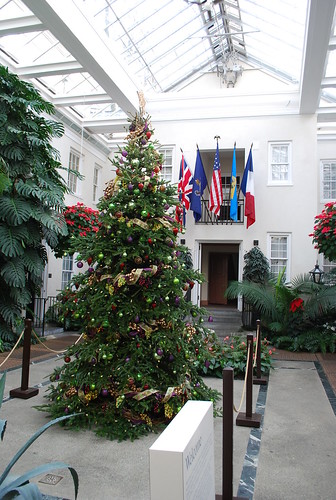 DuPont was apparently so pleased with the house conservatory that he began planning a much grander one. His vision became reality and the new conservatory was opened on November 25, 1921, using the latest technology of the time to heat, water, and power the complex. Instead of the typical jungle exotics, DuPont filled his glass house with fruits and flowers, giving it the feeling of a European orangery (the name by which a section of the Main Conservatory is still referred to today). Included in the structure were a number of smaller production houses where fruit and vegetables were grown in all seasons for the estate. Today, fruit and veg are still grown in some of these spaces in horticultural displays that are aesthetic as well as functional.
DuPont was apparently so pleased with the house conservatory that he began planning a much grander one. His vision became reality and the new conservatory was opened on November 25, 1921, using the latest technology of the time to heat, water, and power the complex. Instead of the typical jungle exotics, DuPont filled his glass house with fruits and flowers, giving it the feeling of a European orangery (the name by which a section of the Main Conservatory is still referred to today). Included in the structure were a number of smaller production houses where fruit and vegetables were grown in all seasons for the estate. Today, fruit and veg are still grown in some of these spaces in horticultural displays that are aesthetic as well as functional.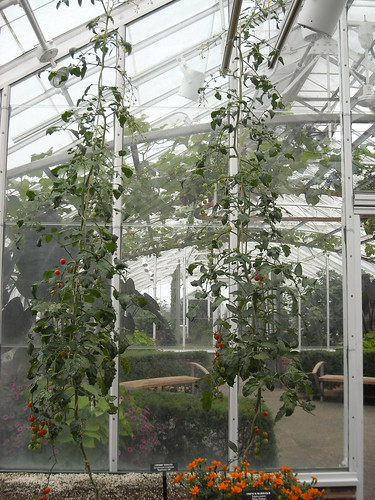 In my opinion, the most ingenious part of the building is the Exhibition Hall floor. The area is sunken below the level of the main walkways and designed so that the floor can be flooded to hold several inches of water. The water can be drained in a matter of hours and the floor dried so that special events can be held there. Everything from plant and flower society shows to dinner events to special seasonal displays are presented. If you ever get a chance to attend a candlelight dinner on the fern floor, I highly recommend it. I can't think of a more romantic setting than the conservatory at night with the stars shining overhead. Sigh.
In my opinion, the most ingenious part of the building is the Exhibition Hall floor. The area is sunken below the level of the main walkways and designed so that the floor can be flooded to hold several inches of water. The water can be drained in a matter of hours and the floor dried so that special events can be held there. Everything from plant and flower society shows to dinner events to special seasonal displays are presented. If you ever get a chance to attend a candlelight dinner on the fern floor, I highly recommend it. I can't think of a more romantic setting than the conservatory at night with the stars shining overhead. Sigh.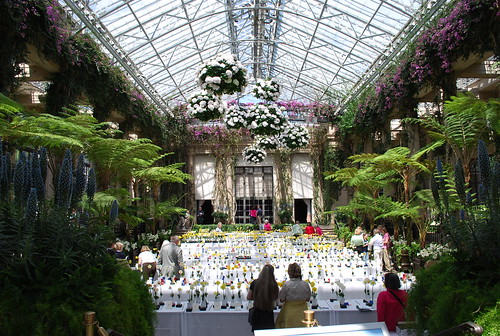 In 1926 the Azalea House was added - now called The East - and in 1966, the Palm House. The conservatory at Longwood also houses the Music Room and the Ballroom, which is home to an Aeolian organ weighing 55 tons with the pipes installed in 9 chambers measuring 63 feet wide, 23 feet deep, and 40 feet tall. It's one of the largest residences organs in the world and is nearing the end of an extensive renovation.
In 1926 the Azalea House was added - now called The East - and in 1966, the Palm House. The conservatory at Longwood also houses the Music Room and the Ballroom, which is home to an Aeolian organ weighing 55 tons with the pipes installed in 9 chambers measuring 63 feet wide, 23 feet deep, and 40 feet tall. It's one of the largest residences organs in the world and is nearing the end of an extensive renovation.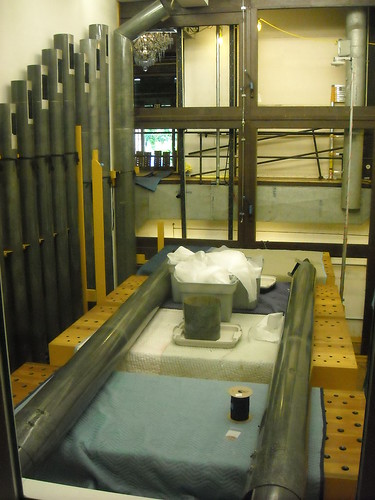
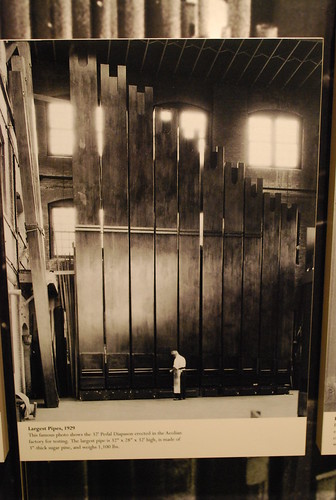
Yeah. Wow, right?!
And this is just the tip of the conservatory iceberg. So, while a conservatory would ordinarily be a place to preserve plants that are unique or rare, or to house a collection of some sort, the conservatory here also extends the gardening season through the winter and provides an artistic venue to showcase ordinary plants used in extraordinary ways. One day I might regale you with tales of the dark and creepy tunnels underneath or photos of the impressive boilers (because who doesn't appreciate a photograph of an impressive boiler?). For now I'll leave you with a few images of the floral artistry that never ceases to amaze me.
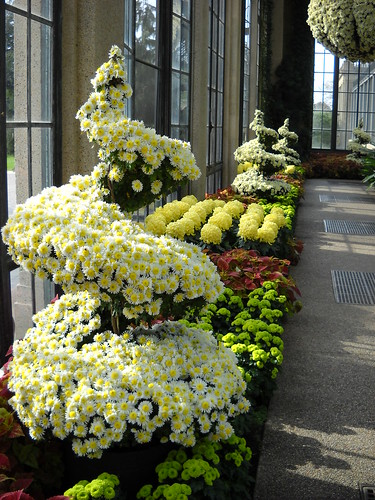
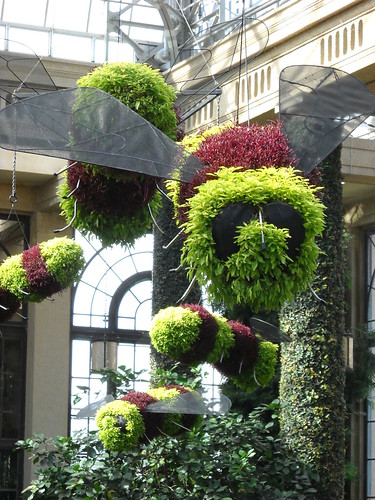
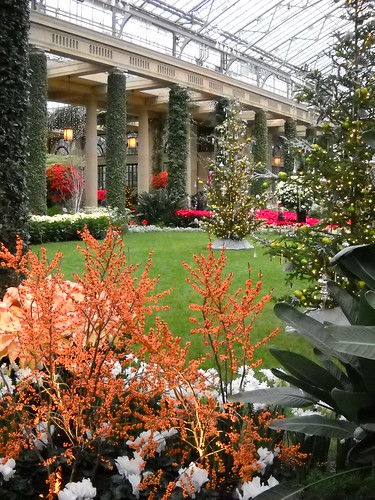
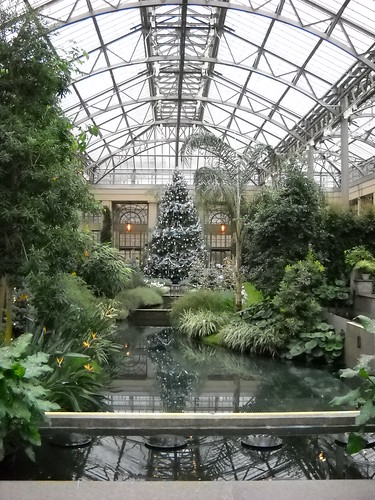
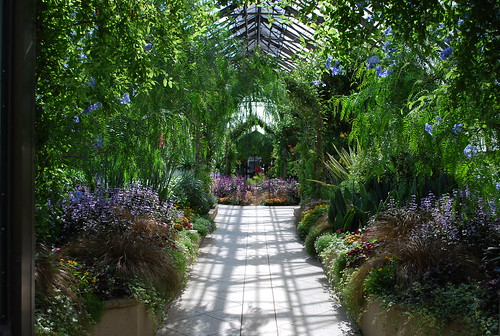
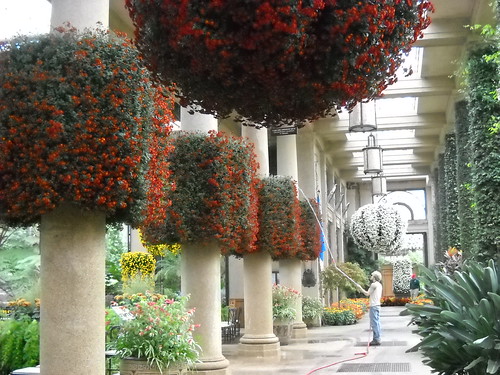
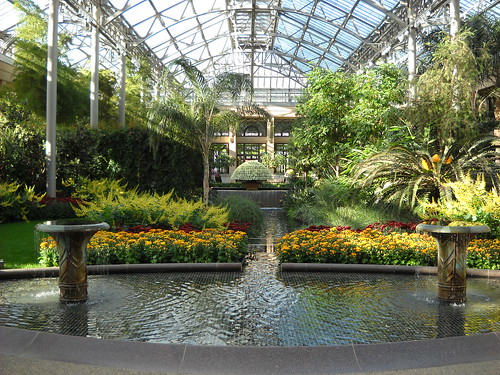
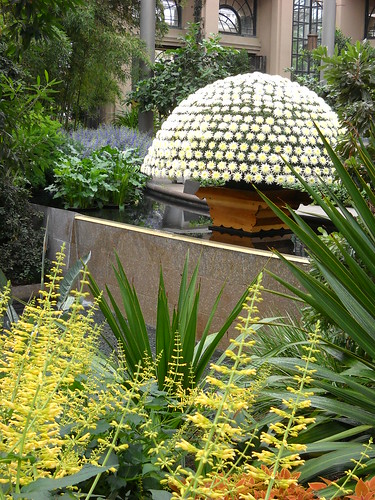





No comments:
Post a Comment